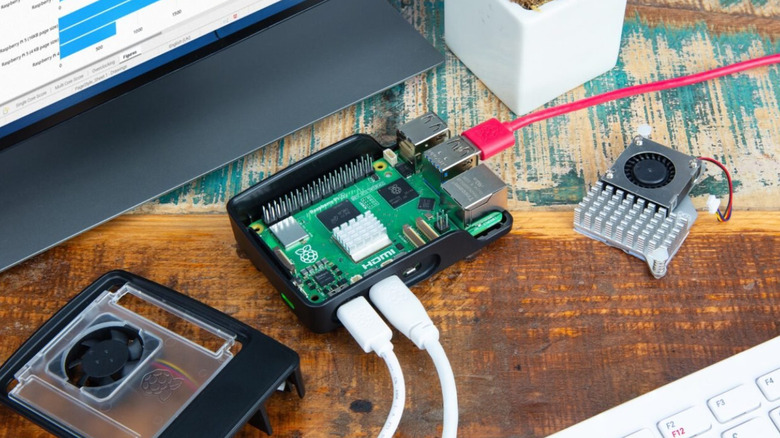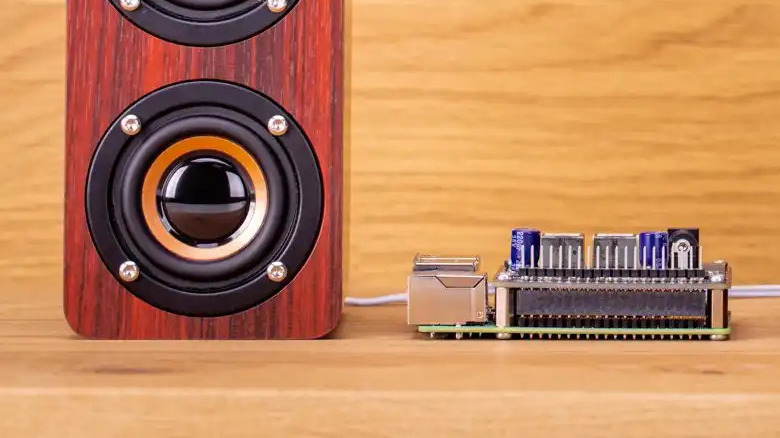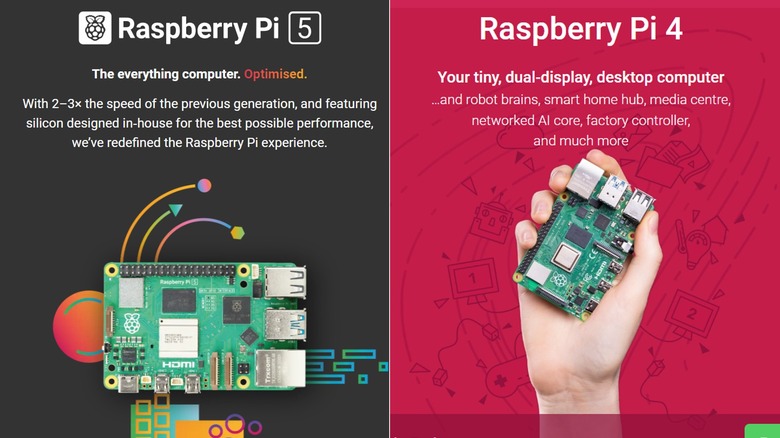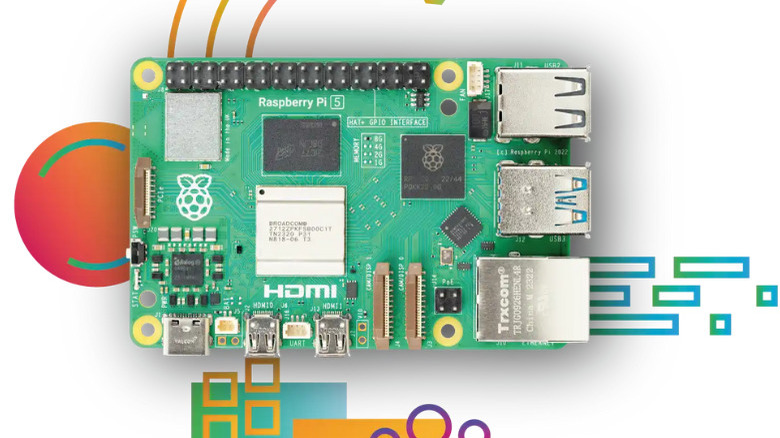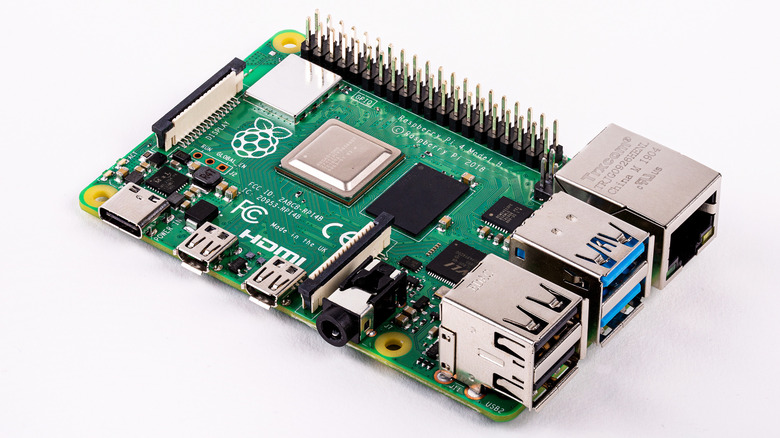Raspberry Pi 5 Vs Pi 4: How Do They Compare, And Which Is Best For Your Next Project?
When developing projects that will require portability, and connectivity, your first instinct is to grab a Raspberry Pi. And why not? This single-board computer (SBC), which has become especially popular among makers and hobbyists, not only offers various features and versatile use cases, but is also affordable, easily accessible, and designed to be as user and beginner-friendly as possible.
When picking a Raspberry Pi model for your project, it's only natural to go with the boards in the flagship line since they come with more advanced specifications and higher performance. The Raspberry Pi 5 and Pi 4, in particular, are two such SBCs that deliver exceptional capabilities. Both the Raspberry Pi 4 and the Pi 5 can run RetroPie, Ubuntu, and LibreELEC. They're also both equipped with two micro-HDMI ports for dual monitor functionality, and come with GPIO pins for your sensor-based applications. However, despite these similarities, it's also important to keep in mind that even the flagship Pi boards aren't created equal — the most recent Pi is more powerful, while the Raspberry Pi 4 is better in certain situations.
If you're torn between upgrading to the Pi 5 or sticking with the older Pi 4, let's break down their major differences and see which board is more suited for the type of project you're working on.
What are the Raspberry Pi 4 and 5?
The Raspberry Pi 5 is the latest addition to the Pi's flagship lineup, and compared to the other Raspberry Pi products, it's also considered to be the most powerful. Despite its high performance, though, the Pi 5 remains as portable and convenient as the previous iterations, conveniently coming in the same 85 by 56 mm form factor. The board is available in two variants: $60 for the 4GB RAM option and $80 for a unit with 8GB RAM.
The Raspberry Pi 4, on the other hand, is the predecessor of the Raspberry Pi 5. It was released in 2019, just a few months before the world shut down due to COVID-19. This proved to be quite serendipitous, as it served as many school kids' primary computer at home during the height of the pandemic. For the RAM variants, the Pi 4 comes with four options (1GB, 2GB, 4GB, and 8GB), starting at a modest $35. You can also get a Pi 4 derivative called the Pi 400, which is essentially a keyboard and Pi board mashup, reminiscent of home computers from the 1980s and 1990s.
What are their major differences?
You can easily mistake the Pi 5 for the Pi 4 at a glance, but under the hood, they're a world apart. One of the biggest tells is their processors. The Pi 5 features a more advanced 2.4GHz Cortex-A76. Despite the figures, it's roughly three times faster than the Pi 4's 1.5GHz Cortex-A72, so expect a major performance boost.
There's also a significant difference between the boards' onboard peripherals, with the Pi 5 featuring more components. At the top of this list is the PCIe bus, which connects the board to external M.2 peripherals, such as an SSD. If you want to use the official Pi AI Kit, you'll need to buy an M.2 HAT+, as the PCIe is specifically for SSDs. Other noticeable upgrades on the Pi 5 are the camera/display connectors and the micro-HDMI ports. Unlike the Pi 4, the Pi 5's camera and display connectors are dual-purpose, so you can connect either two cameras, two displays, or one of each. The Pi 5's micro-HDMI ports are also different as they can handle two 4Kp60 displays simultaneously; the Pi 4 can drive only one 4Kp60 or two 4Kp30 monitors. Other handy peripherals on the Pi 5 include a power button and a UART port. One thing the Pi 5 lacks that the Pi 4 has, though, is the 3.5 mm audio-visual jack for your headphones, amplified speakers, and even older displays that can accept composite video input.
As for the power consumption, the Pi 4's 15W requirement sits closer to the older models' 12.5W, while the Pi 5's power needs are nowhere close — with a 5.1V/5A supply recommended.
When should you use a Raspberry Pi 5?
With all the shiny new features of the Raspberry Pi 5, the board becomes particularly useful in projects involving AI, and is often a much better option than the Pi 4 when it comes to such projects. According to Seeed Studio's tests, the Pi 5 has significantly faster average inference rates than the Pi 4 when running computer vision models like the MobileNet-v3, YOLOv4 Tiny, and Vision Transformer. DFRobot also deployed some large language models (LLM) on both boards. In the tests, the Pi 5 outperformed the Pi 4, with the latter taking around 10 seconds to generate a single token, while the Pi 5 provided at least 2 tokens per second. When connected to the Pi AI Kit, the Pi 5 is even more impressive.
This board is perfect for computer vision applications, including a smart security camera that only records when people are detected in the frame, a trash sorter, a gesture-controlled robot, and even wildlife detection and monitoring. There are also several LLM applications you can use on the Pi 5, such as a recipe generator, text summarizer, or book recommendation chatbot.
Aside from AI-related use, you can create home office projects with the Pi 5 too. You can convert it into a productivity PC with two 4Kp60 monitors or a dual-camera live streaming device, both of which are possible with the Pi 5's upgraded HDMI and camera/display interfaces. If your project needs a HAT — for instance, a Sense HAT for environment monitoring, or a DigiAMP+ HAT for a home theater — the Pi 5 is still compatible with official HATs designed for the Raspberry Pi 4. There are also a host of third-party HATs available for this board.
When should you use a Raspberry Pi 4?
You might think that the more powerful board is the best way to go, but that actually isn't always the case. Depending on the circumstances, it's sometimes more sensible to go with the lower-capacity option. Between the Pi 5 and Pi 4, the latter is the better pick if you're on the hunt for a cheaper board for your less intensive projects. For instance, if you're building a time-lapse camera, air quality tracker, or media center, you probably wouldn't be too keen on spending $80 just for the board. The Pi 4's 1GB variant, on the other hand, only costs $35, and, according to users, it's enough to run N64 and PSX emulator games and a basic FTP server.
The Pi 4 is also best if you're working with a 15W power supply for your project. Although it's possible to use such a source with the Pi 5, you won't be able to use the board to its full potential. Another reason to go with the Pi 4 is OS compatibility. If your project only works on Raspberry Pi Bullseye, the Pi 5 isn't for you as it uses the latest OS, Bookworm.
For AI-related projects, you can rely on the Pi 4 too. After all, the Pi 5 being the faster SBC doesn't necessarily mean it's the only board capable of such applications. Some users have had great success using the Pi 4 to detect cars while on the road and as a voice assistant. If you want to increase this board's AI performance, you can connect third-party AI accelerators like the Google Coral USB Accelerator. However, compared to the official AI Kit, they tend not to have the same performance at their price point.
